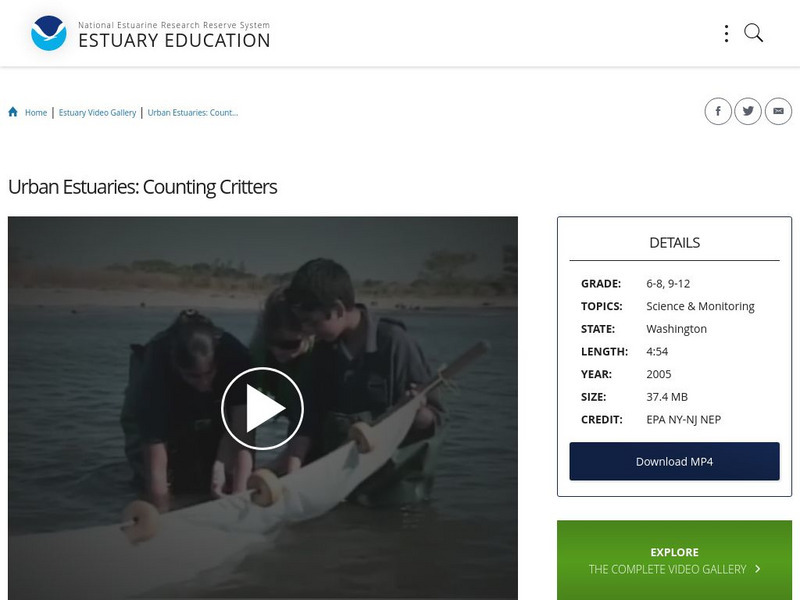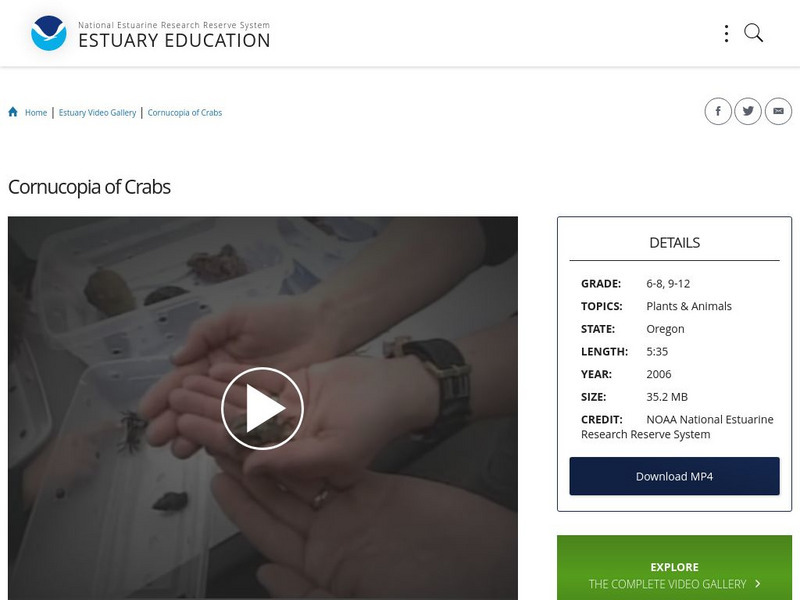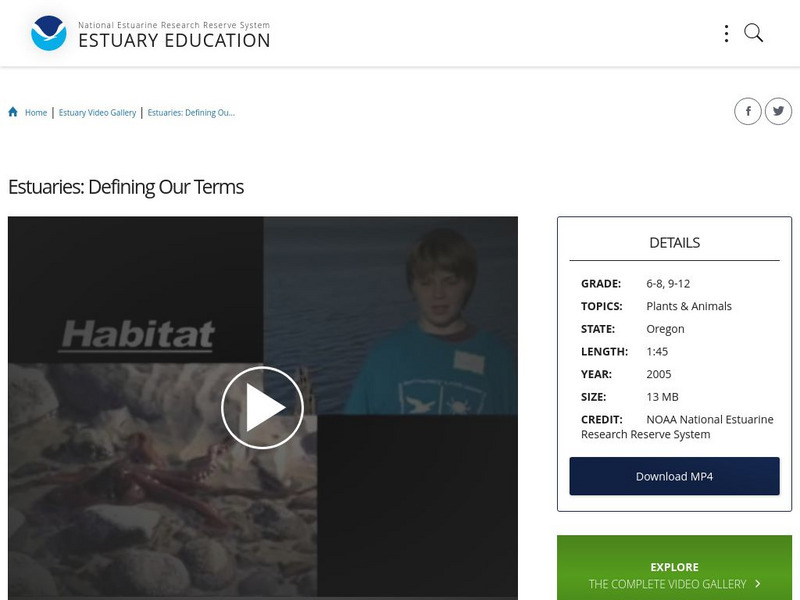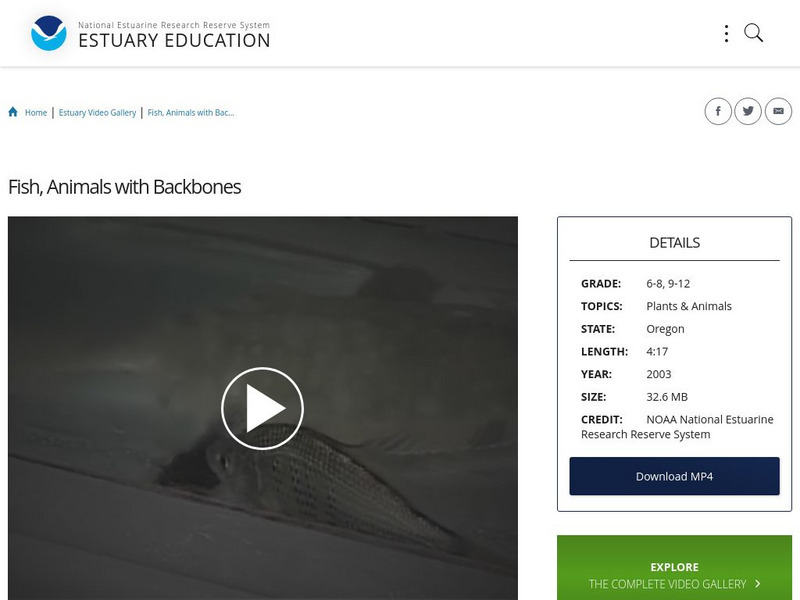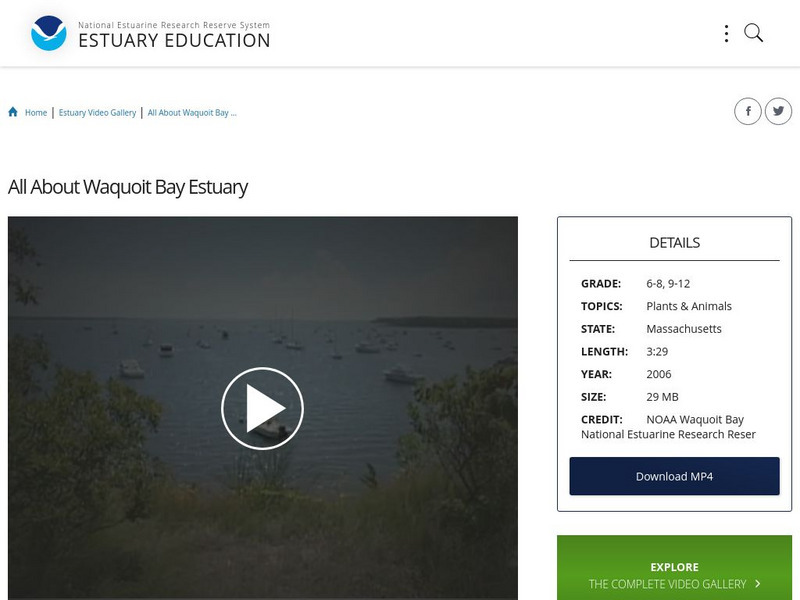TED Talks
TED: What a living whale is worth -- and why the economy should protect nature | Ralph Chami
How much is one living blue whale worth in the fight against climate change? A lot more than you may think, says financial economist Ralph Chami. He explains the value of bringing the language of dollars and cents to conservation -- and...
Science360
Navy veteran studies genetic variation - Scientists & Engineers on Sofas (and other furnishings)
Graduate Research Fellow Amy Battocletti is a Navy veteran who was awarded a Graduate Research Fellowship in 2014. She’s a doctoral candidate in biology at Georgetown University conducting research on the impact of genetic variation...
Mazz Media
Marsh
This live-action video program is about marshes. The program is designed to reinforce and support a student's comprehension and retention of the word through use of video footage, photographs, diagrams and colorful, animated graphics and...
Ancient Lights Media
Atlas of the United States: Louisiana
This clip explores the geography, history, and some important cultural features of Louisiana.
Getty Images
Thick-billed Green Pigeon ( treron curvirostra)
Thick-billed Green Pigeon Bird Kiss naturally like lace and a large salt marsh habitat.
Getty Images
Aerial view of the shoreline of Lake Nabor Carrillo.
Aerial view of the shoreline of Lake Nabor Carrillo.
Getty Images
Aerial view of lush marshland in the outskirts of Mexico City.
Aerial view of lush marshland in the outskirts of Mexico City.
Getty Images
Leaving the city of Chimalhuacan then crossing the blue green waters of Lake Nabor Carrillo in the Valley of Mexico.
Leaving the city of Chimalhuacan then crossing the blue green waters of Lake Nabor Carrillo in the Valley of Mexico.
Getty Images
View of lush marshland in the outskirts of Mexico City.
View of lush marshland in the outskirts of Mexico City.
Getty Images
View of the salt marshes in the Valley of Mexico.
View of the salt marshes in the Valley of Mexico.
Getty Images
City of Chimalhuacan and Lake Nabor Carrillo in The Valley of Mexico.
City of Chimalhuacan and Lake Nabor Carrillo in The Valley of Mexico.
Sky News
Brave decision not to rebuild as storms and floods wrecked farmland paid off for nature
VOICED: In 2014 the sea wall at Cwm Ivy on the Gower Penninsular in Wales suffered severe damage. But rather than rebuild it, the National Trust let nature take over. SHOWS: Exterior shots of agriculture land, gvs plants, gvs flora and...
AFP News Agency
CLEAN : Normandy tries "strategic withdrawal" methods to combat rising sea levels
Moving a coastal campsite or a salt marsh lamb farm inland: in Normandy, "strategic withdrawal" projects are beginning to see the light of day as the sea eats away at the region's coasts (Footage by AFPTV via Getty Images)
NOAA
Noaa: Estuary Education: China Camp State Park
California's China Camp State Park is an important environmental and historic site which has a natural watershed along the shores of San Francisco Bay. Features in the estuary include an extensive intertidal salt marsh, meadow, and oak...
NOAA
Noaa: Estuary Education: Urban Estuaries: Counting Critters
Students use a seine net to count marine life in the NY-NJ Estuary. Scientists explain why some animals thrive and others decline, why some fish can be eaten and some cannot. [4:50]
NOAA
Noaa: Estuary Education: Building a Salt Marsh
Find out how a salt marsh can be built or rebuilt. This video explains how plants are chosen to restore a salt marsh near New York City. [3:52]
NOAA
Noaa: Estuary Education: Cornucopia of Crabs
Learn about the wide variety of crabs found in the Oregon waters, including the estuaries and other marine ecosystems. [4:33]
NOAA
Noaa: Estuary Education: Estuaries: Defining Our Terms
Students quickly run down the major aspects of what makes an estuary, watershed, habitat, and food web. [1:45]
NOAA
Noaa: Estuary Education: Saving the Tijuana Estuary
The estuary stands as the last barrier between the Pacific Ocean and pollution. Its mix of plants and silt acts as a filter that purifies contaminated inland rain and flood waters before they reach the ocean. [3:47]
NOAA
Noaa: Estuary Education: Fish, Animals With Backbones
Learn about the life of several fish species as they thrive in the estuary ecosystem. See some close-ups of South Slough Estuary fishes while learning about their importance to the food chain. [4:14]
NOAA
Noaa: Estuary Education: All About Waquoit Bay Estuary
A quick overview of the Waquoit Bay Estuary, including what an estuary is and what makes this estuary unique. [3:29]
NOAA
Noaa: Estuary Education: Researching the Clam
Everything you wanted to know about clams and other related bivalves of Waquoit Bay in Massachusetts. [4:21]
NOAA
Noaa: Estuary Education: Tracking Striped Bass
Estuary scientists use sophisticated electronic equipment to study and track the Striped Bass, a resident of the estuary and open ocean. [9:16]
NOAA
Noaa: Estuary Education: Intertidal Habitat
Join a scientist and several young students as they explore an intertidal pool using a seine net and fish traps. [4:45]


